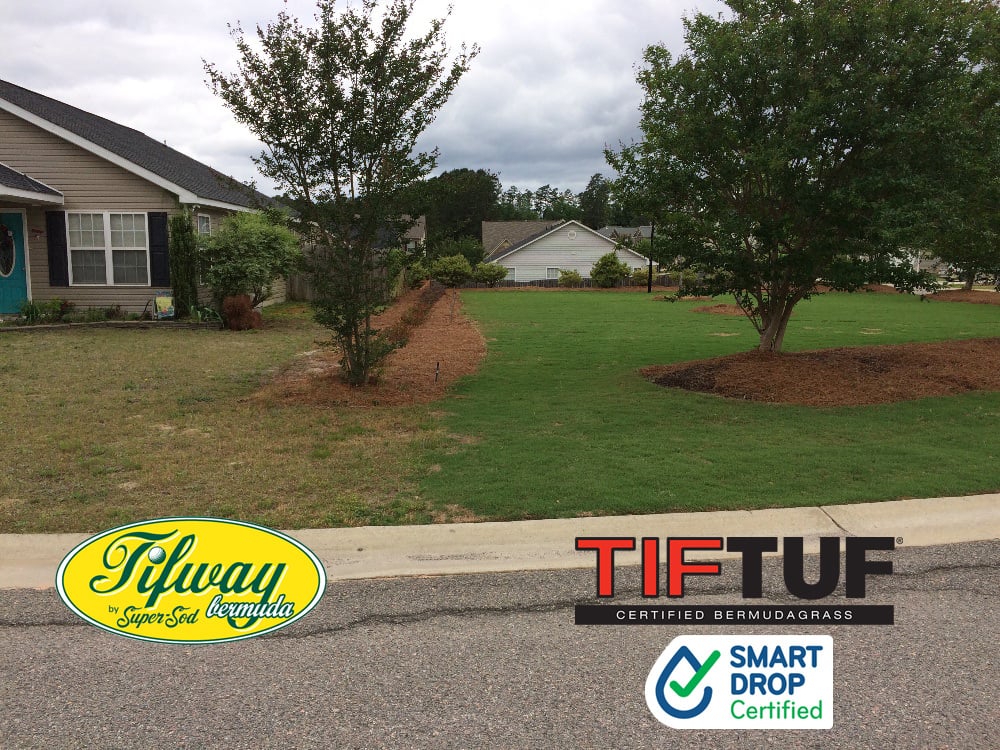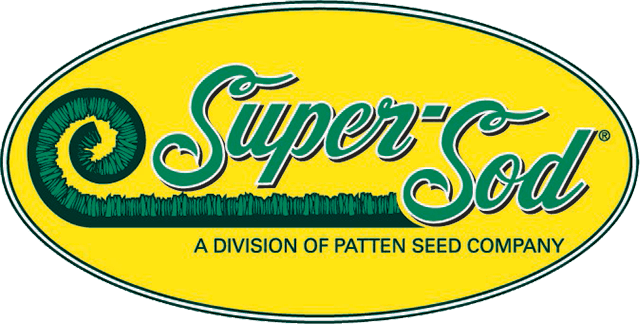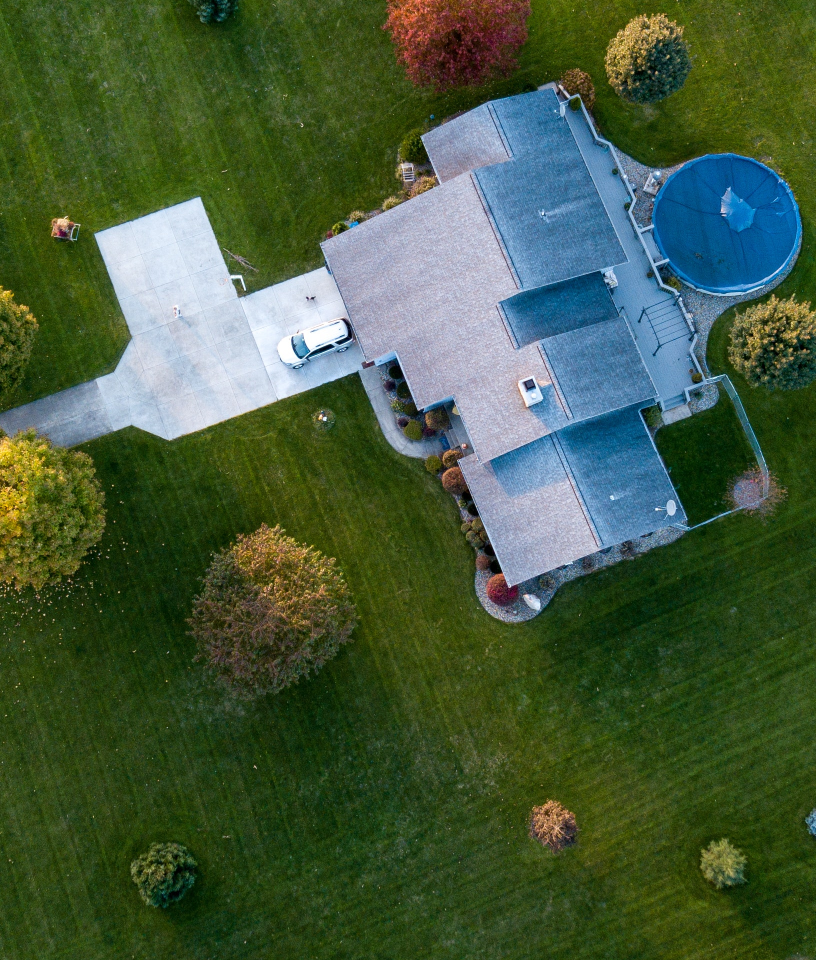Expert‑Recommended Grass Types That Remain Vibrant Throughout Texas Summers
Texas summers test even the toughest lawns with triple-digit temperatures, intense sun, and unpredictable rainfall. Selecting the right grass variety makes the difference between a thriving, green landscape and a patchy, stressed lawn.
The best grasses for Texas summers are warm-season varieties bred for heat and drought resilience—specifically TifTuf Bermudagrass, Zeon Zoysia, and Palisades Zoysia. These grasses maintain vibrant color, recover well from stress and drought, and TifTuf Bermuda, especially , requires less water than traditional Bermudas.
Understanding each grass type's strengths, maintenance needs, and ideal growing conditions helps homeowners and landscapers create lawns that stay beautiful all summer long.
Common Bermudagrass
Bermudagrass dominates Texas lawns for good reason. This warm-season turfgrass thrives in full sun and covers an estimated 60 to 70 percent of residential and commercial lawns across the state, according to turf management experts. Its popularity stems from exceptional heat tolerance, rapid growth, and ability to withstand heavy foot traffic—making it ideal for everything from front yards to sports fields.
Bermudagrass thrives in the intense heat that stresses other varieties. Its aggressive spreading habit through stolons and rhizomes allows it to self-repair from wear and damage quickly.
The trade-offs are manageable but worth noting. Bermudagrass requires frequent mowing during the peak growing season—often weekly—to maintain an attractive height. It performs poorly in shade, turning thin and weak with less than six hours of direct sunlight daily. Proper fertilization is essential to maintaining the deep green color homeowners expect; without adequate nitrogen, Bermuda can appear pale or yellowish even when healthy.
For Texas homeowners seeking a reliable, drought-tolerant grass that delivers year after year, traditional Bermudagrass varieties like Tifway remain a proven foundation. However, newer cultivars such as TifTuf offer even greater resilience for the state's harshest conditions.
Super-Sod's TifTuf Bermudagrass
TifTuf Bermudagrass represents the next generation of heat and drought resilience. Developed through selective breeding, this improved hybrid Bermuda cultivar was specifically engineered to maintain superior color and density during extended dry periods. Research confirms that TifTuf outperforms standard Bermudagrass varieties in drought survival, often maintaining acceptable green color and turf quality with significantly less irrigation.
What sets TifTuf apart is its ability to thrive when irrigation is turned off entirely during drought periods. Once established, TifTuf can maintain an acceptable appearance without supplemental watering—a critical advantage during Texas water restrictions or for homeowners seeking lower water bills. The grass also greens up earlier in spring and retains color later into fall compared to common Bermuda, extending the season of visual appeal.
TifTuf's fine texture and dense growth create a luxurious appearance suitable for both residential lawns and high-use athletic fields. The variety has earned recognition from turf professionals statewide for its performance across diverse Texas soil types and climate zones, from the humid Gulf Coast to the arid Trans-Pecos region.
For Texas homeowners prioritizing water conservation without sacrificing lawn quality, TifTuf Bermudagrass delivers measurable advantages over traditional varieties. Its proven track record in the state's most challenging conditions makes it the top choice for sustainable, vibrant summer lawns.
|
Feature |
TifTuf Bermudagrass |
Other Bermudagrasses |
| Drought Survival | Superior | Moderate |
| Water Requirements | Minimal after establishment | Moderate |
| Summer Color Retention | Excellent | Good |
| Spring Green-Up | Greens up early | Greens up later |
| Fall Color Retention | Withstands several frosts, staying green longer into fall | Goes dormant early |
Drought Tolerance Comparison
While the leaf texture and color are similar, TifTuf Bermuda (on the right) clearly outshines Tifway 419 Bermuda (on the left) during drought.
The practical implications of these differences are substantial. While traditional Bermuda varieties may require frequent irrigation to prevent browning during dry spells, TifTuf maintains its appearance with minimal supplemental watering.

St. Augustinegrass
St. Augustinegrass offers a distinctly different aesthetic and growing profile compared to Bermuda varieties. This broad-bladed, warm-season grass creates thick, lush lawns with a soft padding underfoot. Its standout characteristic is superior shade tolerance—St. Augustine thrives in partial shade where common Bermudagrass would struggle, making it the preferred choice for yards with mature trees or structures that block direct sunlight.
The grass performs best in Texas's humid regions, particularly along the Gulf Coast and in East Texas, where it naturally suppresses weed growth through its dense canopy.
However, St. Augustine has clear limitations for Texas summers. It requires consistent moisture during dry spells and shows drought stress more quickly than Bermuda or Zoysia varieties. The grass is also vulnerable to frost damage, limiting its reliability in North and West Texas where winter temperatures drop significantly. Several serious insect and disease issues require vigilant monitoring during hot, humid weather.
For shaded lawns in Texas, St. Augustine remains a viable option when homeowners commit to adequate irrigation and proactive pest management. The grass's water requirements and maintenance needs make it less suitable for drought-prone areas or water-conscious landscapes.
Zoysiagrass
Zoysiagrass strikes a balance between Bermuda's sun tolerance and St. Augustine's shade adaptability. This dense, warm-season turfgrass develops a thick, carpet-like appearance that naturally crowds out weeds once established. While Zoysia grows more slowly than Bermuda—taking longer to fill in after installation—its long-term benefits include reduced maintenance and strong resistance to pests and diseases.
Zoysia performs well in mixed sun and shade conditions, making it ideal for lawns with varying light exposure throughout the day. The grass tolerates moderate foot traffic and recovers reliably from drought stress, though not as aggressively as Bermuda varieties. Its fine to medium texture creates an attractive, manicured appearance with less frequent mowing than Bermuda requires.
Super-Sod offers two premium Zoysia varieties optimized for Texas conditions:
Zeon Zoysia features an ultra-fine texture and exceptional shade tolerance, requiring only 4 to 5 hours of direct sunlight daily. This variety maintains deep green color throughout summer and into fall, staying green through several frosts. Zeon's soft feel and low growth habit make it popular for residential lawns where appearance and luxurious plushness matter most.
Palisades Zoysia offers broader blades and good durability for high-traffic areas. This cultivar handles heat and drought stress exceptionally well while requiring decent sunlight—typically 6 to 7 hours daily. Palisades grows more vigorously than Zeon, filling in bare spots more quickly and tolerating heavier use from children, pets, and outdoor activities.
Both Zoysia varieties require less water than St. Augustine and less mowing than Bermuda, positioning them as low-maintenance options for homeowners seeking quality without constant upkeep. Their slower establishment is offset by long-term durability and minimal pest pressure.
|
Attributes |
Zeon Zoysia |
Palisades Zoysia |
TifTuf Bermudagrass (for comparison) |
| Texture | Ultra-fine | Medium | Fine |
| Shade Tolerance | Good (4-5 hours direct sun) | Moderate (6-7 hours direct sun) | Moderate (5-6 hours direct sun) |
| Drought Recovery | Good | Good | Excellent |
| Traffic Tolerance | Moderate | Moderate | Very High |
| Mowing Frequency | Moderate; every 7-10 days | Moderate; every 7-10 days | High; every 4-7 days |
Choosing the Right Grass for Texas Summers
Selecting the optimal grass variety requires evaluating your specific lawn conditions, lifestyle, and priorities. No single grass type suits every Texas property—success depends on matching variety characteristics to your site's unique requirements.
Key factors to assess:
-
Sunlight exposure: Count the hours of direct sun your lawn receives daily. Full-sun areas (6+ hours) favor Bermuda and Zoysia varieties, while shaded zones require St. Augustine (2-3 hours direct sun) or Zeon Zoysia (4-5 hours direct sun).
-
Water availability: Consider your irrigation system capacity and local water restrictions. TifTuf Bermuda excels in low-water scenarios, while St. Augustine demands consistent moisture.
-
Soil conditions: Texas soils range from sandy coastal plains to heavy clay in Central Texas. TifTuf Bermuda adapts to all soil types, making it the most versatile choice across the state.
-
Foot traffic: High-use lawns with children, pets, or frequent entertaining need durable varieties like TifTuf Bermuda.
-
Maintenance commitment: Bermuda lawns require weekly mowing and regular fertilization; Zoysia types grow more slowly, so they need less mowing and a little less fertilization. St. Augustine is high maintenance due to watering and disease pressure.
-
Budget: Consider both installation costs and long-term maintenance expenses, including water, fertilizer, and mowing.
For most Texas homeowners, TifTuf Bermuda emerges as the best overall choice. Its exceptional drought tolerance, minimal water requirements after establishment, and proven performance across all Texas climate zones deliver reliable summer color with lower resource inputs than other varieties. The grass adapts to diverse soil types from sandy loam to heavy clay and maintains quality through extreme heat that stresses lesser varieties.
Homeowners can explore Super-Sod's interactive sod filter or visit local stores for personalized recommendations tailored to their specific property conditions and goals.
| Grass Type | Drought Tolerance | Sun Tolerance | Shade Tolerance | Traffic Tolerance | Maintenance Level |
| TifTuf Bermuda | Excellent | High: thrives in full sun | Medium: Needs 5-6 hours direct sun | Excellent | Moderate |
| Zeon Zoysia | Good | High: thrives in full sun | High: Needs only 3-4 hours direct sun | Moderate | Moderate |
| Palisades Zoysia | Good | High: thrives in full sun | Medium: Needs 6-7 hours direct sun | Moderate | Moderate |
| St. Augustine | Poor | High: thrives in full sun |
High: needs only 2-3 hours direct sun |
Low | High |
Factors Influencing Grass Performance in Texas
Environmental conditions, soil characteristics, and lawn use patterns all shape how successfully grass varieties perform during Texas summers. Understanding these factors helps homeowners set realistic expectations and choose varieties aligned with their site's realities.
Critical performance factors:
-
Regional climate: Texas spans multiple climate zones, from humid subtropical along the Gulf to semi-arid in West Texas. Coastal areas receive 40+ inches of annual rainfall, while western regions may see less than 15 inches. Grass selection must account for local precipitation patterns and temperature extremes.
-
Soil composition and pH: Texas soils vary dramatically, from sandy soils in East Texas to alkaline clays in Central and North Texas. Most warm-season grasses prefer slightly acidic to neutral pH (6.0-7.0), but TifTuf Bermuda tolerates a wider pH range than other varieties.
-
Sunlight hours: Direct sun exposure determines which grass types can thrive. TifTuf Bermuda requires 5-6 hours of direct sunlight daily, while shade-tolerant options like St. Augustine and Zeon Zoysia maintain quality with as little as 2-3 hours of direct sunlight for St. Augustine and 3-4 hours for Zeon.
-
Irrigation capacity: Available water—whether from rainfall, irrigation systems, or manual watering—limits grass options. Drought tolerance measures a grass's ability to survive extended dry periods without permanent damage. St. Augustine will require irrigation, as it needs 2 inches of water per week. TifTuf Bermuda is the best option for full-sun or moderately shady lawns in Texas, as it only needs water during establishment, after which irrigation can be turned off.
-
Foot traffic intensity: Heavy use from recreation, pets, or pathways requires grasses with strong wear tolerance and rapid recovery. TifTuf Bermuda handles traffic better than St. Augustine. Zeon and Palisades Zoysia are middle-ground in terms of traffic tolerance.
-
Pest and disease pressure: Hot, humid conditions favor fungal diseases and insect pests. Grasses with natural resistance reduce chemical inputs and maintenance costs. Avoid St. Augustine if your area is prone to pest and disease issues.
-
Temperature extremes: Summer highs exceeding 100°F and occasional winter freezes stress turf. Heat-tolerant varieties like TifTuf maintain metabolic function and color during extreme heat that forces other grasses into dormancy. TifTuf is also more cold-tolerant than other Bermuda varieties.
Drought tolerance refers to a grass's physiological ability to maintain acceptable appearance and survive extended periods without irrigation. Most warm-season grasses survive drought by going into protective dormancy when necessary—then recover quickly when moisture returns. TifTuf Bermuda, alone of all the warm-season lawns, maintains an acceptable level of green color and density during a drought, due to its well-developed root system.
Shade tolerance measures how well a grass maintains density, color, and health with reduced sunlight. Shade-tolerant varieties like St. Augustine and Zeon Zoysia have adapted photosynthetic efficiency and growth patterns that allow them to thrive with limited direct sun exposure.
TifTuf Bermuda's versatility across these factors explains its status as the premier choice for Texas heat and drought conditions. The variety performs reliably in all Texas soil types, from acidic sandy loams to alkaline clays, and maintains acceptable quality through temperature extremes that damage lesser grasses. Its exceptional drought tolerance allows established lawns to survive extended dry periods without irrigation—a critical advantage during water restrictions or for homeowners prioritizing conservation.
How to Maintain a Vibrant Lawn During Texas Summers
Proper maintenance practices maximize any grass variety's summer performance. Even the most drought-tolerant grass requires strategic care to maintain color, density, and health through extreme heat.
Essential summer lawn care practices:
Watering strategy: Water deeply but infrequently to encourage deep root growth. Irrigation timing matters—water between 4 AM and 10 AM to minimize evaporation and allow grass blades to dry before evening, reducing disease risk. TifTuf Bermuda requires water only during establishment; once mature, irrigation can be turned off entirely during drought while maintaining an acceptable appearance. Zoysia varieties need approximately 1 inch of water weekly, while St. Augustine requires 2 inches per week during active growth.
Mowing height: Maintain proper cutting height for your grass type. Bermuda performs best at .5 to 2 inches, Zoysia at .5 to 1.5 inches, and St. Augustine at 2 to 3.5 inches. Never remove more than one-third of the blade length in a single mowing.
Fertilization: Apply slow-release nitrogen fertilizer according to your grass type's needs. Bermuda requires more frequent feeding—typically every month during active growth—while Zoysia needs lower amounts of nitrogen over the same period. Avoid over-fertilizing during extreme heat, which can stress grass and increase disease susceptibility.
Drought stress recognition: Watch for early warning signs including grass blades rolling, a dull blue-gray color replacing vibrant green, and footprints that remain visible on the lawn instead of blades springing back. These symptoms indicate the need for irrigation before permanent damage occurs.
Super‑Sod Lawn Care Products and Seasonal Resources
Build a Texas-tough lawn with premium sod and proven guidance tailored to summer heat:
-
Choose your sod: TifTuf Bermudagrass, Zeon Zoysia, and Palisades Zoysia deliver the performance and aesthetics highlighted above.
-
Explore seasonal advice: Super‑Sod’s expert how‑tos and seasonal tips on the Lawn Care Blog cover mowing, watering, fertilizing, and summer problem‑solving.
-
Shop lawn care essentials: Find sod and related products on the Super‑Sod Products page to support installation and maintenance all season long.
Frequently Asked Questions
What is the best grass for Texas heat and drought?
TifTuf Bermudagrass is the top choice thanks to superior drought survival, minimal water needs after establishment, and excellent traffic tolerance.
Which grass handles shade best in Texas?
Zeon Zoysia thrives with just 3–4 hours of direct sun. St. Augustine also performs well in partial shade but typically needs more water and attentive pest management.
How much should I water in summer?
Once established, TifTuf can maintain acceptable appearance with little to no supplemental irrigation during drought. Zoysia lawns generally need about 1 inch of water per week, while St. Augustine requires 2 inches during active growth.
When is the best time to install sod in Texas?
Warm-season sod establishes fastest from late spring through early fall when soil temperatures are high. TifTuf Bermuda and Palisades Zoysia sod can be installed year-round (even when dormant) with with proper care.
What mowing height should I use?
Bermuda: .5 to 2 inches; Zoysia: .5 to 1.5 inches; St. Augustine: 2–3.5 inches. Avoid removing more than one‑third of the blade at a time.
Which grass stands up best to kids and dogs?
TifTuf Bermuda offers outstanding wear tolerance and recover quickly from traffic, especially when grown in sunny conditions.
Can I mix grass types to handle sun and shade?
It’s generally not recommended. Different growth habits, fertilization requirements, and mowing heights lead to uneven appearance and maintenance. Instead, choose a single variety that fits the site—or create separate, clearly defined lawn areas if conditions vary drastically.
How long does new sod take to establish?
Expect 2 to 3 weeks for light use and 4 to 6 weeks for full rooting, depending on temperature, soil prep, and watering. TifTuf Bermuda establishes quickly under warm conditions.



